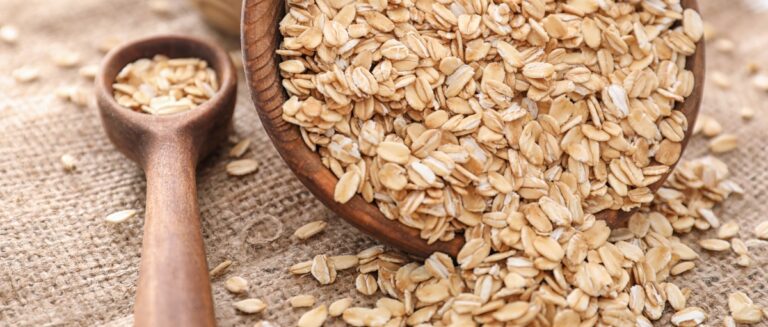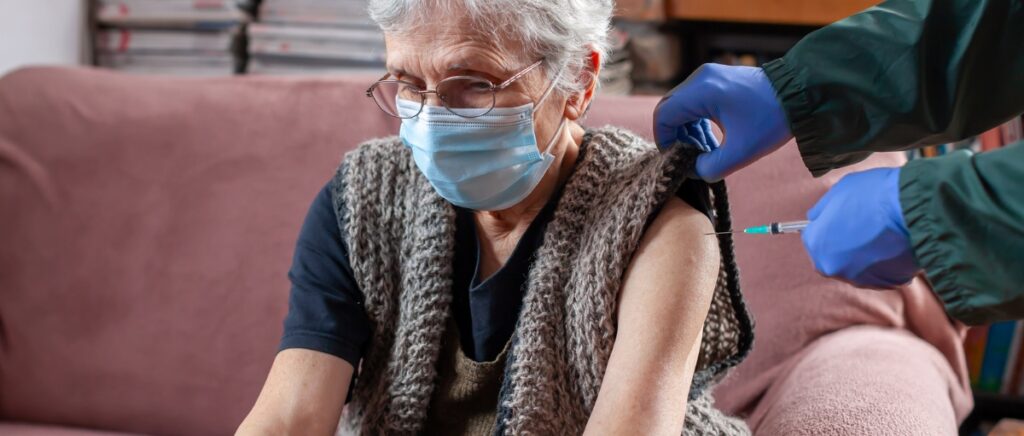No one likes getting shots, but COVID-19 boosters and annual flu vaccines can be important resources to keep our communities safe as we age. While many older adults worry about potential side effects, sore arms are actually a good sign that the vaccine is doing its job.
In fact, as many as 82% of people report soreness in their arm after the Covid-19 vaccinations.
Let’s go over why injection site soreness happens and offer tips to prevent and relieve discomfort. We’ll also cover signs of a more serious reaction and when to contact your doctor. With this information, you can face your next vaccine appointment confidently.
Why Do Shots Make You Sore?
While no one enjoys the ache that follows a shot in the arm, it’s helpful to understand why vaccines can trigger soreness in the first place. There are two main culprits behind this common reaction:
The Needle Is Mildly Traumatic (in a Good Way)
When you get a vaccine, a small needle punctures your skin to deliver fluid into the muscle below. This alone is enough to cause some microscopic damage and irritation to the muscle fibers, leading to temporary inflammation.
Vaccines Turn On Inflammation by Design
In addition to the needle stick, vaccines are specifically designed to teach your immune system how to fight off potential infections. Part of this learning process involves producing a protective inflammatory response.
So while a sore arm after a vaccine might be mildly annoying, it’s proof that your body is doing exactly what it needs to to build immunity from the vaccine. This reaction is usually mild and fades within a day or two as your immune system finishes its target practice.
What to Expect After Your Shot
If you’re preparing for your next vaccine, you might have some questions about what to expect regarding arm pain and soreness. Here are answers to some of the most common concerns:
How long does the soreness usually last?
Most people’s achiness and stiffness peak around 12-24 hours after the injection and then gradually improve. Any soreness should be mild and not interfere too much with your daily activities. Typically, symptoms will only last a few days, if it lasts longer than two days, consider contacting your doctor.
Which arm should I get the shot in?
There’s no right or wrong answer to this one—it comes down to personal preference and your plans for the day. Some people get vaccines in their non-dominant arm so any soreness is less bothersome. But others find that using their dominant arm more helps work out the stiffness and reduce pain. If you’re not sure, just let your vaccine administrator know if you have a preference. They’ll be happy to accommodate you.
Do some vaccines cause worse soreness than others?
While reactions can vary from person to person, some vaccines are more likely to cause a sore arm than others. This is because different vaccines contain different ingredients and stimulate the immune system to varying degrees. For example:
- Flu shots tend to cause more soreness than other routine vaccines
- Shingles and pneumonia vaccines that target older adults often cause more intense aching
- COVID-19 vaccines, especially the mRNA versions, are known for causing milkd arm pain
But don’t let this deter you – all vaccines are carefully formulated to be as minimally irritating as possible while still effectively training your immune system. A day of discomfort is well worth the long-term protection.
6 Strategies to Prevent and Relieve a Sore Arms After Vaccines
Now that you know why your arm gets sore after vaccines, let’s dive into some simple, scientifically-backed ways to minimize this reaction and feel your best:
- Relax your arm during the injection. Tensing up your muscle can lead to more pain afterward. Take a few deep breaths, look away if necessary, and let your arm go limp.
- Move your arm after the shot. Gentle movement can boost blood flow, work out stiffness, and reduce swelling. Try some basic shoulder rolls or arm circles every few hours.
- Apply ice to numb pain and calm inflammation. Wrap an ice pack or bag of frozen peas in a thin towel and hold it on the sore area for 10-15 minutes.
- Take an over-the-counter pain reliever if needed. Acetaminophen (Tylenol) or ibuprofen (Advil) can take the edge off more intense achiness. If you have any medical conditions or take other medications, double-check with your doctor or pharmacist first.
- If possible, schedule your vaccine before a rest day. Most people find the soreness peaks the day after the shot. Planning ahead to avoid strenuous activity can make this 24-hour period more manageable.
- Switch to heat after the first 24 hours. If your arm is still sore the next day, apply a warm compress or shower. The heat can soothe stiffness and promote healing.
When to Contact Your Doctor
While some soreness is normal and expected after vaccines, there are a few signs that warrant medical attention:
- Severe pain that gets progressively worse over hours or days
- Redness, swelling, or warmth that spreads beyond the injection site
- Any symptoms of an allergic reaction like widespread rash, face swelling, or difficulty breathing (very rare)
Prolonged or worsening pain may indicate a rare complication called SIRVA. If your symptoms are severe or not improving after 2-3 days, don’t hesitate to contact your doctor for an evaluation.
Understanding SIRVA
SIRVA stands for “Shoulder Injury Related to Vaccine Administration.” It occurs when a vaccine is injected too high on the shoulder, potentially damaging the sensitive tendons, ligaments, or bursa.
- Symptoms: SIRVA is characterized by sudden shoulder pain within 48 hours of a vaccine and a limited range of motion. The pain is often described as intense and does not improve much with over-the-counter measures.
- Diagnosis: If your doctor suspects SIRVA, they will start by gathering a detailed history of your symptoms. They may also order imaging tests like an ultrasound or MRI to check for signs of inflammation or structural damage in the shoulder.
- Treatment: Physical therapy to restore strength and mobility to the affected shoulder is the first line of treatment for SIRVA. Steroid injections may also be used to reduce inflammation. Surgery is rarely needed, only in the most severe cases.
- Prognosis: With proper diagnosis and treatment, most SIRVA patients will see significant improvement in their symptoms. However, a small percentage may experience some degree of long-term pain or reduced range of motion.
While SIRVA sounds scary, it’s important to remember that this complication is exceedingly rare. Recent estimates that it occurs in about 1 out of every 1,000 vaccine doses. Nurses and pharmacists are trained in proper injection techniques to avoid this issue.
Arm Yourself with Knowledge for a More Comfortable Vaccine Experience
No vaccine is 100% painless, but the temporary discomfort pales compared to the suffering prevented by these life-saving immunizations. Rather than focusing on the fear of side effects, you now have the knowledge and tools to take a proactive approach.
Understanding the why behind sore arms and using these simple strategies to reduce your risk allows you to walk into your next vaccine appointment with confidence and peace of mind. Remember, a mildly achy arm is a small price to pay for the priceless protection vaccines provide for you, your family, and your community.
As the old saying goes, an ounce of prevention is worth a pound of cure. So the next time you roll up your sleeve, take a deep breath, relax your arm, and pat yourself on the back for this vital step to arm your immune system. Your future self will thank you.
Sources
JAMA Network. (2021). Factors associated with severe vaccine-related shoulder injuries. JAMA. https://jamanetwork.com/journals/jama/fullarticle/2778441
Harvard Health Publishing. (2024). Why does my arm hurt after I get a shot? Harvard Health. https://www.health.harvard.edu/staying-healthy/why-does-my-arm-hurt-after-i-get-a-shot
Parkview Health. (2024). Sore arm after your vaccine? That’s a good thing. Parkview Health. https://www.parkview.com/blog/sore-arm-after-your-vaccine-thats-a-good-thing
National Center for Biotechnology Information. (2019). Shoulder injury related to vaccine administration (SIRVA): Overview and cases. NCBI. https://www.ncbi.nlm.nih.gov/pmc/articles/PMC6347325/
U.S. Pharmacist. (2021).Shoulder injuries after vaccination: Rare but do occur. U.S. Pharmacist. https://www.uspharmacist.com/article/shoulder-injuries-after-vaccination-rare-but-do-occur











